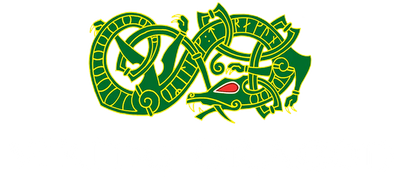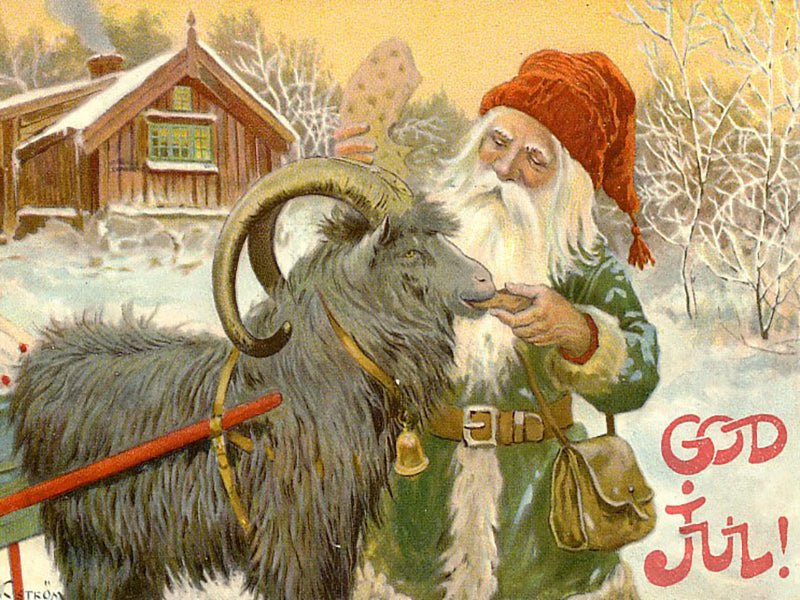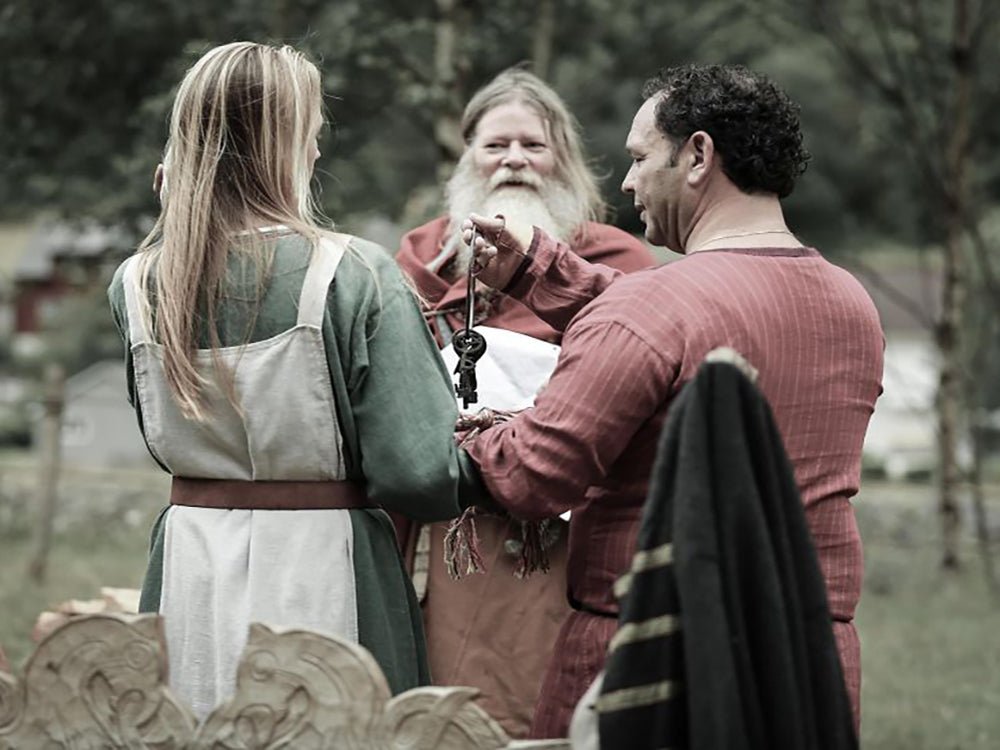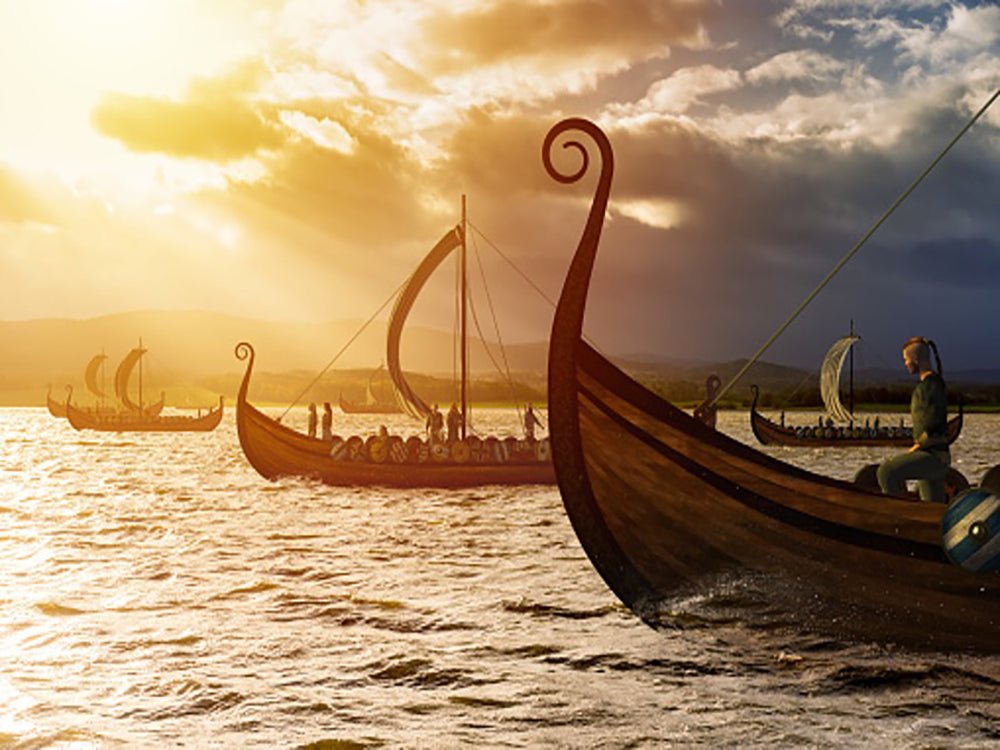Yule traditions that you might still celebrate today

When we first learn about Christmas as children, we’re told that our holiday traditions are based on the Nativity story. However, if you stop to think about some of the most popular aspects of a modern Christmas, a lot of them don’t seem to have a Christian origin. Many of our favourite Christmas traditions predate Christianity and were absorbed into Christmas rituals from an older festival. Yule, the Viking celebration of the Winter Solstice, was a 12-day holiday beginning around the 21st of December. Marked with revelling, drinking, and singing to bring some light into the dark winter, this time of year reminded Vikings that Spring was just around the corner.
You can read more about the origins of Yule here and how it gradually merged with Christmas. This combining of the two holidays left its mark on the way that we celebrate the festive season today to the extent that there are probably a good number of Yule traditions that you’ll celebrate in your home this winter.
Christmas Elves

Elves were a large part of Nordic mythology and came in a variety of shapes and sizes. One variety of elves were the barn-dwelling Nisse or Tomte. Usually depicted as around knee height, with a long, white beard and wearing a conical-shaped cap, it’s not hard to see how their appearance might have inspired modern depictions of Santa’s little helpers.
Though they existed year-round, Vikings thought most about Nisse during Yule. Medieval Scandinavians would leave out food for the Nisse to encourage them to continue guarding their home for another year (or at least dissuade them from causing mischief as these little elves were wont to do). This tradition has continued in Scandinavia, where many families leave out buttered porridge for the Nisse at Christmastime In Iceland, it’s also believed that elves move to new homes on New Year's Eve, so many people will leave candles in their windows or on the porch to light them on their way.
Christmas Trees and Wreaths
Wreaths and Christmas trees are another festive tradition that we have the Vikings to thank for. Evergreen trees, especially the pines of the Scandinavian forests, had a very special place in Nordic folklore. Associated with Baldur, the Sun God, they were revered as signs of ongoing life through the cold, dark winters. During Yule, Vikings would even decorate evergreen trees with carvings of the Gods and place offerings under the tree to ask the spirits to bring an early Spring.
Plants, such as holly and berries, had a similar Yule-tide significance. Also evergreen, they too represented life continuing through the winter and the hope of Spring on the horizon. Vikings would often fashion evergreen forest plants into wreaths, the ring shape representing both the cyclical nature of the seasons and the sun which would soon return. Sometimes wreaths would even be set alight to create a sun wheel and rolled down a hill to entice Baldur to bring back the sun.
Wreaths have been associated with wintertime in Britain since the tradition first landed on our shores. Like so many other pagan traditions, they were given a Christian significance in the Middle Ages and adapted for the new winter holiday. During the reformation they were often triangular as a reference to the holy trinity, only regaining their sun wheel shape during the Victorian era.
Though Christmas trees are a much newer addition to British Christmas, there is a direct line between the evergreen trees of Viking Yule and the pine in your living room today. In Germany and Scandinavia, the evergreen tree went straight from Pegan tradition to Christmas celebration as it was adorned with a Christian significance in the Middle Ages. The story goes that Saint Boniface found a group of pagans worshipping an oak in Germany, cut it down in one fell swoop and replaced it with a pine which he blessed for the Christ Child. Medieval Germanic Christmas trees were called ‘Paradise Trees’ and it was said that when Jesus was born in the dead of winter, the trees all shook off their snow and shone emerald green as if it was the middle of summer. It was German-born Prince Albert, who had grown up decorating a ‘Paradise Tree,’ who brought the tradition to England and with one early photograph solidified the Christmas tree as part of every family Christmas.
Mistletoe
Another plant that made its way into Yule celebrations was mistletoe, and it was associated with love, peace and resurrection. It got its significance through the God Baldur, who in one famous legend is said to have been killed when Loki poisoned him with arrows made of mistletoe. Rushing over to the body of her son, Baldur’s mother, Frigg, turned the white mistletoe berries red with her tears, thus bringing the God back to life.
During Yule, Vikings brought mistletoe into their homes as a symbol of resurrection and love. According to some sources, men would have to lay down any weapons before stepping into a house that had mistletoe hung over the door. Representing themes of new beginnings, love and reconciliation, it’s no wonder that mistletoe was easily absorbed into Christian celebrations in the Middle Ages. Some believe that the plant’s association with resurrection and new life morphed into the tradition of kissing under the mistletoe sometime in the 18th century, however, the origins of this tradition have been lost to the ages.
Yule Goats

Now this is one that readers from outside the Nordic countries might not recognise, but in Scandinavia, many families decorate their houses with straw goats around the Christmas period. The Viking Yule Goat is a reference to the two bucks - Tanngrisnir and Tanngnjóstr - who pulled Thor’s chariot. One story goes that as Thor and Loki were travelling through the land of Giants, they came to rest at the home of a poor farmer. Finding that he didn’t have enough food to feed his family, Thor sacrificed his two goats and prepared a bountiful feast for his hosts. The next day, Tanngrisnir and Tanngnjóstr were resurrected and the gods continued on their way. The popularity of this story and its themes of generosity and renewal gave rise to the Yule Sacrifice, an important community ritual in which a goat would be sacrificed to the God Njord.
Though the practice of a Yule sacrifice was abandoned by Scandinavian Christians, the Yule Goat never lost popularity as a Christmas tradition. His association with the holiday changed over the years, at one point emerging as an anti-Christian demon and at other points as a party prankster who would run through the town telling jokes and home truths about the revellers. Today the Yule Goat is most prominent as a straw decoration, wrapped in red ribbon, which can often be found at the doorway or on the mantlepiece of a Scandinavian home. That’s not to say that the Yule Goat’s association with mischief is over.
Every year since 1966 the Swedish town of Gävle has erected an enormous Yule Goat in the town centre and almost every year it has been vandalised, hacked to pieces, or even burned to the ground. As of writing, this year’s Gävle Goat still stands proudly on Castle Square, however, his predecessor didn’t even make it to Christmas day, having been burned down on the 17th of December. In a way, you could say it’s bringing back the original Yuletide sacrifices of the Viking era.




